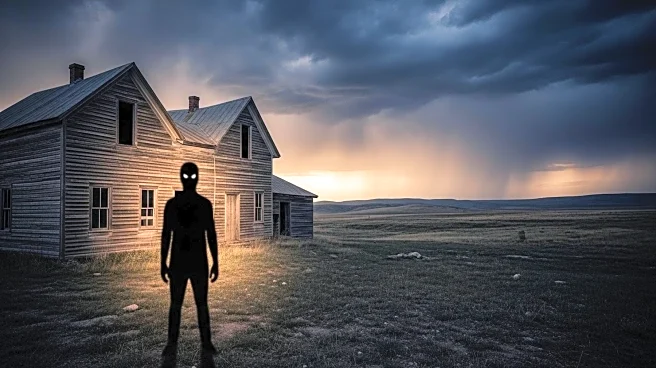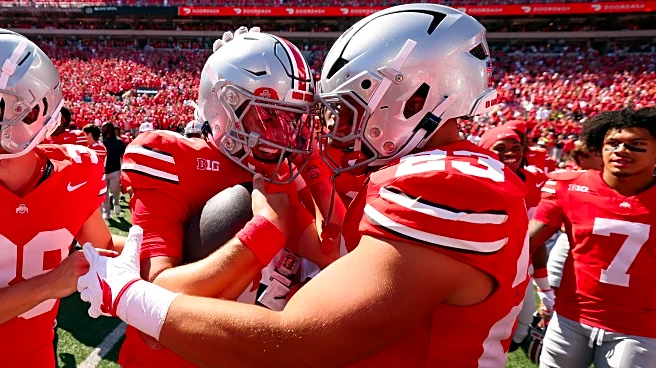What's Happening?
Ryan Murphy's anthology series, Monster, is set to release its latest installment, The Ed Gein Story, on October 3. This season features Charlie Hunnam portraying Ed Gein, a notorious figure in American criminal history. The series explores Gein's life as a serial killer and grave robber in 1950s Wisconsin, whose gruesome crimes inspired numerous horror films, including Psycho and The Texas Chain Saw Massacre. The show includes a cast of Murphy regulars and newcomers, such as Laurie Metcalf and Vicky Krieps, who bring to life the chilling narrative of Gein's obsession with his mother and his impact on the horror genre.
Why It's Important?
The Ed Gein Story is significant as it delves into the origins of modern horror, highlighting how real-life events can shape cultural narratives and entertainment. By focusing on Gein's story, the series not only entertains but also educates viewers on the historical context of horror films. This installment may influence public perception of crime and its portrayal in media, potentially sparking discussions on the ethical implications of dramatizing real-life tragedies. The series could also impact the horror genre by setting new standards for storytelling and character development.
What's Next?
Following the release of The Ed Gein Story, Ryan Murphy's Monster series is expected to continue exploring infamous figures, with plans for a season centered on Lizzie Borden. This ongoing exploration of historical criminals may lead to increased interest in true crime narratives and their adaptation into television series. The show's success could encourage other creators to delve into similar themes, potentially leading to a surge in crime-based content across streaming platforms.
Beyond the Headlines
The portrayal of Ed Gein raises questions about the ethical responsibilities of filmmakers when depicting real-life criminals. The series may prompt discussions on the impact of such portrayals on victims' families and society's understanding of crime. Additionally, it highlights the cultural fascination with deviant behavior and its influence on popular media, potentially leading to a reevaluation of how crime stories are told.












